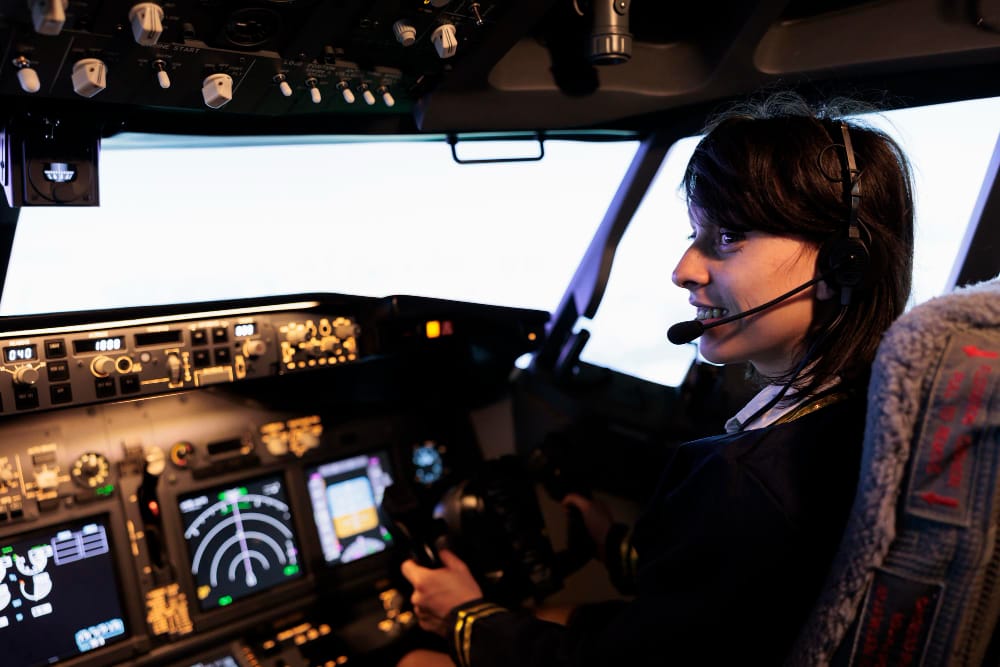Table of contents
ToggleAs the aviation sector faces unprecedented complexity, ATM-EXCITE stands at the forefront of ensuring cyber resilience in aviation. Backed by the SESAR3 Joint Undertaking and the European Union’s Horizon Europe program, the project is redefining how cross-border air traffic management (ATM) systems can securely interoperate. In an era where drones, military coordination, and real-time data flows converge, strengthening cross-border ATM security is not just strategic, it’s essential.
The evolving threat landscape in multinational ATM systems
The drive toward seamless cross-border air traffic management presents intricate cybersecurity challenges. Coordinating civil and military airspace management among sovereign states necessitates harmonization of digital communication protocols, authentication mechanisms, and collaborative threat detection systems. Although this interoperability enhances operational efficiency, it simultaneously enlarges the collective attack surface exposed to cyber threats.
Emerging threats include coordinated cyberattacks targeting weak links in interoperable infrastructures, such as outdated communication modules or inconsistently patched systems. With the rise of unmanned aerial vehicles (UAVs) and autonomous drones, new vulnerabilities emerge, these platforms can be hijacked, spoofed, or used as entry points into sensitive ATM networks.
Cyber adversaries—including advanced persistent threat (APT) actors sponsored by nation-states and organized cybercriminal syndicates—have demonstrated escalating sophistication. Their capabilities encompass compromising real-time surveillance feeds, orchestrating denial-of-service attacks to degrade availability, and manipulating flight routing commands. The interconnectedness of multinational ATM systems provides attackers potential pathways for lateral movement, amplifying risks and underscoring cybersecurity as a collaborative imperative.
ATM-EXCITE recognizes that resilience begins with understanding these threats. Through scenario simulations and risk modelling, the project aims to anticipate disruptions before they escalate, establishing a safer, more secure foundation for European airspace coordination.
Key vulnerabilities in interoperable air traffic management systems
While interoperability is vital for effective cross-border ATM operations, it introduces notable cybersecurity vulnerabilities, particularly due to the prevalent reliance on legacy hardware and software enshrined in many European ATM facilities. These aging systems were designed before cybersecurity became a critical consideration, resulting in minimal encryption, weak or absent authentication protocols, and deficient capacities for real-time threat detection and incident response.
Another critical weakness lies in data exchange mechanisms. As countries share surveillance, trajectory, and identification data across borders, any inconsistency in encryption standards, access controls, or data validation protocols can be exploited. A breach in one national system may cascade into others if trust boundaries are poorly defined.
Moreover, identity management across jurisdictions poses a complex challenge. Air traffic controllers, military authorities, and automated systems all require secure, verifiable access to shared information. Without harmonized protocols for user authentication and session monitoring, malicious actors can exploit identity loopholes to gain unauthorized access or disrupt communications.
Human factors cannot be overlooked. Inconsistent training and varying awareness levels across ATM personnel in different countries create gaps in protocol execution. Phishing attacks, social engineering, and insider threats remain persistent risks that bypass even the most robust digital defenses.
ATM-EXCITE is tackling these challenges by promoting system harmonization, secure interfaces, and human-centric cybersecurity training—essential pillars for reinforcing cross-border ATM security.
EU-Driven cyber resilience initiatives for ATM
Recognizing the increasing cyber risks in aviation, the European Union has launched several initiatives to build a unified, resilient air traffic management ecosystem. At the forefront is the SESAR3 Joint Undertaking, which, under the Horizon Europe program, provides funding and strategic direction to projects like ATM-EXCITE that are reshaping the cybersecurity landscape of European airspace.
ATM-EXCITE plays a pivotal role by driving research and innovation in cyber resilience aviation. The project focuses on enhancing interoperability without compromising security. Its approach emphasizes real-time coordination between civil and military stakeholders, ensuring that data exchange remains secure and uninterrupted, even under cyber duress.
Central to these efforts are harmonized cybersecurity frameworks across EU member states. These include standardized protocols for threat detection, incident response, and information sharing. ATM-EXCITE actively contributes to this by piloting secure data transmission infrastructures and conducting joint cyber-resilience exercises simulating cross-border incidents.
Moreover, the EU’s Cybersecurity Act and initiatives from the European Union Aviation Safety Agency (EASA) support regulatory convergence. These frameworks help ensure that all ATM stakeholders, whether national authorities, private air navigation service providers, or defense entities, adhere to common security baselines.
By aligning technical innovation with institutional coordination, ATM-EXCITE exemplifies how EU-driven programs are laying the groundwork for robust cross-border ATM security in the digital age.
Technologies enhancing Cyber Resilience in Cross-Border Operations
Technological innovation is fundamental to improving the cyber resilience of air traffic management across European borders. ATM-EXCITE integrates advanced digital tools that are reshaping the landscape of air traffic cybersecurity by focusing on early threat detection, secure communications, and robust system recovery.
One of the most transformative technologies being explored is AI-driven threat detection. These systems leverage machine learning algorithms to monitor network traffic and operational data in real time, identifying anomalies and potential breaches before they escalate. Unlike traditional security measures, AI adapts dynamically, offering an added layer of intelligence in complex, cross-border environments.
Blockchain-based identity management is another key innovation. By providing decentralized, immutable verification for all users and systems involved in ATM operations, blockchain reduces the risk of credential spoofing and unauthorized access. This is particularly valuable in multinational scenarios where harmonizing identity standards is a major challenge.
End-to-end encrypted communication layers, supported by quantum-resistant cryptographic protocols, are being tested to protect the integrity of data flows between civil and military entities. These systems ensure that sensitive surveillance, flight trajectory, and command information remains confidential and tamper-proof across jurisdictions.
ATM-EXCITE also promotes resilience-by-design architectures, where recovery capabilities are built into every critical ATM component. This allows for quick isolation, containment, and restoration in the event of cyber incidents, ensuring uninterrupted air traffic continuity across borders.

FAQs on cyber Resilience in air traffic management
As cyber threats grow more sophisticated, these are the most common questions surrounding ATM cybersecurity across Europe.
What are the cybersecurity risks in ATM?
ATM systems face risks like GPS spoofing, unauthorized access, and communication jamming, often targeting legacy infrastructure.
How does Europe protect cross-border ATM systems?
The EU enforces standardized frameworks, like those from SESAR3 and EASA, ensuring secure, interoperable operations.
What is cyber resilience in air traffic control?
It’s the capacity to anticipate, withstand, and recover from cyber incidents without disrupting air traffic services.
ATM-EXCITE is setting a new benchmark for cyber resilience in aviation, securing Europe’s cross-border airspace through innovation and coordination. Backed by SESAR3 and the EU, its efforts ensure that air traffic operations remain safe, efficient, and secure in the face of evolving cyber threats.




